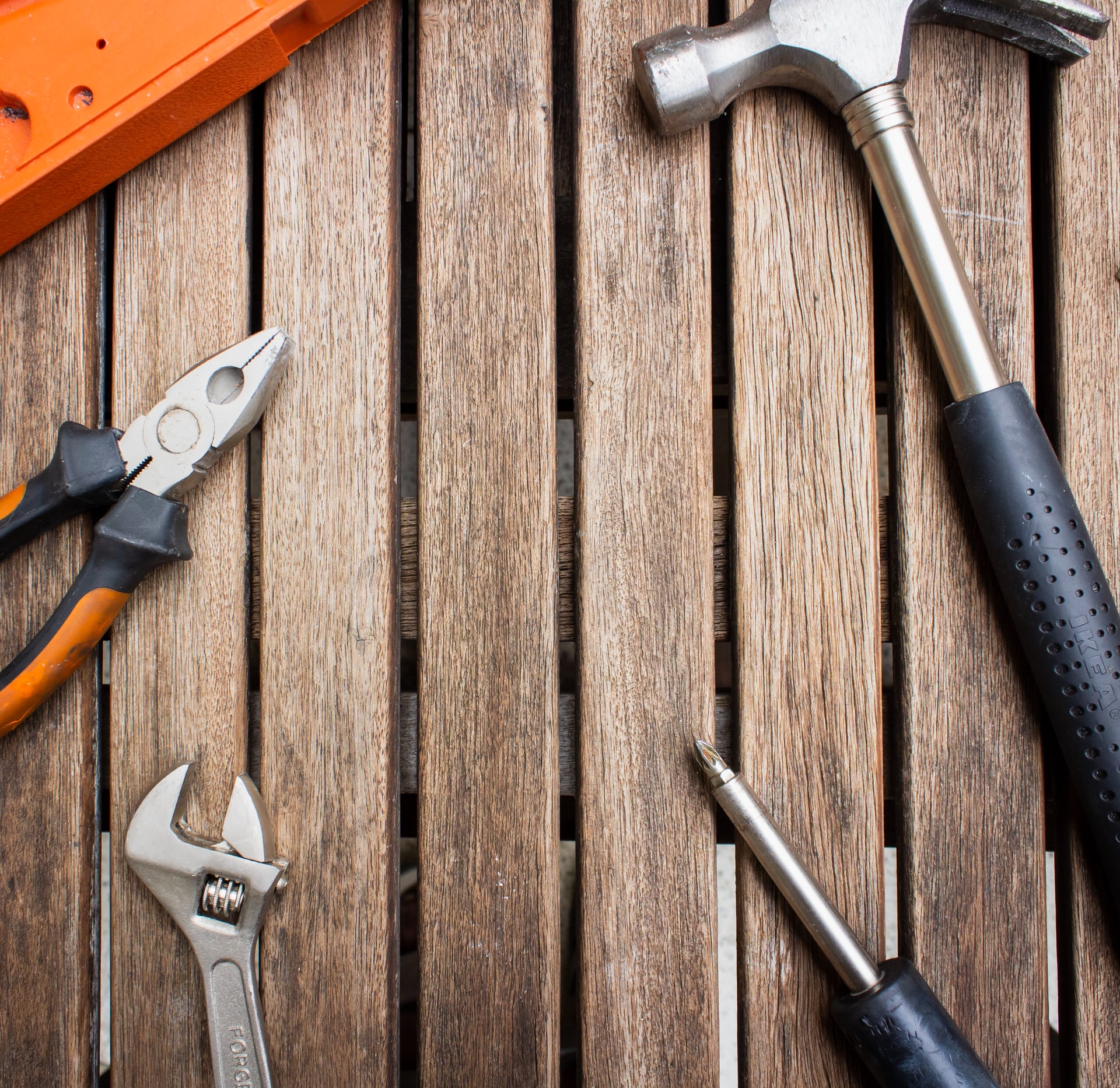Stuck at home? Get busy with home renovation and essential maintenance
Most financial analysts agree that the market for house sales will be suppressed for the foreseeable future. This makes it a perfect time to think of renovating and/or doing necessary maintenance on your existing property.
In addition, the figures add up: “With the banks reducing interest rates, it is a great time to do the renovations that you wish you had done before lockdown,” says Grant Doubell, MD of the Ground Up Company, based in the Jo’burg area, and specialising in property development as well as the redesign, renovation and restoration of houses, apartments, office space and warehouses.
You don’t have to push out the boat in these recessionary times, either. “While you should not be wasteful at this stage, adding value to your current home and improving your living conditions will pay you back over time,” says Grant.
With more of us working from home now, Grant says creating a home office is essential for the future of work. “Remember that creating this room (and we do suggest a closed-off space) within your existing structure is the most cost-effective way to do this.
“In line with the national lockdown and staged/levelled return to activities, a home gym or home theatre is another valuable and worthwhile project to consider.
“If you have the opportunity to convert an old space into a garden cottage, this is a good time to consider creating a supplementary income,” says Grant. “If this is done with consideration to cost and return on investment (project cost versus net rental received), then this is a great time to get it done.”

Brian McKechnie of Activate Architecture says it’s a good time to really think about how we live in our homes.
“Obvious ‘green’ upgrades, especially before winter sets in and also considering SA’s electricity constraints, could be things like double glazing or smart glazing and ceiling insulation. These sustainable upgrades keep homes warm in winter and cool in summer and reduce reliance on non-renewable energy.
“It’s time to get creative, think about activities that can keep the whole family busy, like planting veggie gardens or green walls. You can make lovely green walls using old plastic drinks bottles, strung up with wire or rope, filled with soil from the garden and then planted with herbs or vegetables grown from cuttings. Projects like these not only look beautiful, they also provide extra space to grow herbs and veggies, while teaching the whole family the importance of sustainability.”
Andy Horn, founder of Eco Design Architects in Cape Town, specialises in natural buildings, with a strong emphasis on the use of local natural materials.
Changes that can be done before winter, he says, include improving natural light. “Having good-quality natural light is essential in a healthy eco-friendly home. Studies have found that people become depressed when deprived of natural light. Provided glare is avoided, natural light also helps reduce eye strain. And best of all it’s free, helping to reduce our reliance on electricity.”
How to do this:
1. Paint internal walls in light-tones, or white to reflect natural light. “Use a non-toxic, preferably VOC-free, eco-friendly locally produced paint like ProNature Paints.”
2. Install a skylight to light up dark corners. “Position narrow clerestory windows to wash a wall with soft natural light. Be aware that skylights can cause overheating in summer if not carefully installed, and if not waterproofed properly, are prone to leaks.”

Installing extra insulation in the ceiling will help keep your home cooler in summer and warmer in winter, and will help lower your electricity bill. “Modern houses have to conform to certain insulation standards, whereas older houses did not have to,” says Andy. “So, if you own a house built before 2012, then it’s worth insulating it to modern standards. Cellulose insulation made from recycled paper is an excellent way to add extra insulation and is fast and simple to install.”
“Sun and water cause damage to timber, so check doors and windows, railings, decking, protruding rafters, exposed screens, fascia boards and sidings. I am not a fan of old-school varnishes and waterproof coatings. I prefer to keep timber well-oiled, so that it pretty much lasts forever. Use a non-toxic, locally produced, natural plant-based oil like ProNature oil, which also helps protect timber from UV rays.”
With timber doors, check that there is a weather bar installed at the bottom, as this is often not supplied. This protects the end grain, typically the weak point where doors start to rot.
Bring water costs down with a greywater conversion, says Andy. “Greywater from your showers, basins and laundries can be reused to irrigate the garden. Don’t store it as it begins to smell. Set up a direct sub-surface irrigation system, such as a branched drain system, that uses gravity to direct greywater to underground surge chambers for subsurface irrigation. These systems can be made with repurposed piping, old paint drums turned upside down with holes drilled around the perimeter. Prevent them being clogged with soil with geo-fabric filter cloth, or bidim.”
Expense-free maintenance includes clearing out and fixing leaking and blocked gutters and downpipes; and clearing dead leaves or piles of soil or planting accumulated at the base of any outside walls that could encourage mould.


